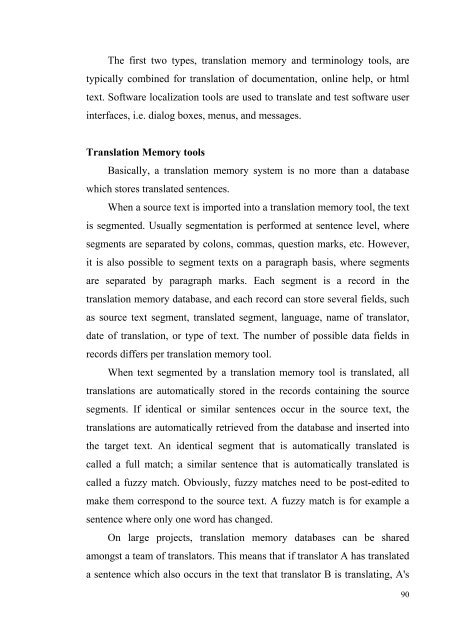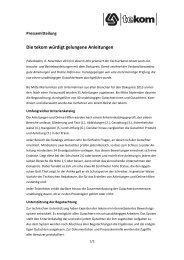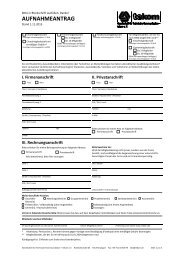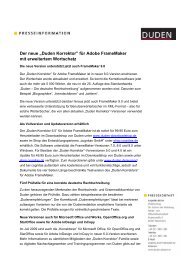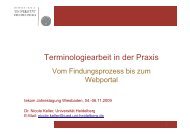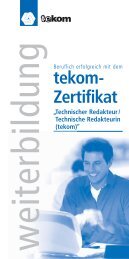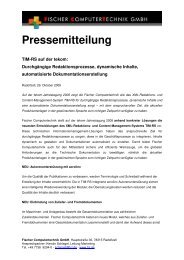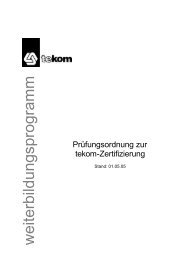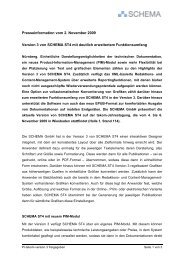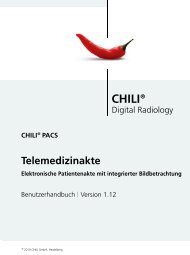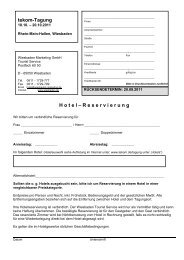qui - Tekom
qui - Tekom
qui - Tekom
You also want an ePaper? Increase the reach of your titles
YUMPU automatically turns print PDFs into web optimized ePapers that Google loves.
The first two types, translation memory and terminology tools, are<br />
typically combined for translation of documentation, online help, or html<br />
text. Software localization tools are used to translate and test software user<br />
interfaces, i.e. dialog boxes, menus, and messages.<br />
Translation Memory tools<br />
Basically, a translation memory system is no more than a database<br />
which stores translated sentences.<br />
When a source text is imported into a translation memory tool, the text<br />
is segmented. Usually segmentation is performed at sentence level, where<br />
segments are separated by colons, commas, question marks, etc. However,<br />
it is also possible to segment texts on a paragraph basis, where segments<br />
are separated by paragraph marks. Each segment is a record in the<br />
translation memory database, and each record can store several fields, such<br />
as source text segment, translated segment, language, name of translator,<br />
date of translation, or type of text. The number of possible data fields in<br />
records differs per translation memory tool.<br />
When text segmented by a translation memory tool is translated, all<br />
translations are automatically stored in the records containing the source<br />
segments. If identical or similar sentences occur in the source text, the<br />
translations are automatically retrieved from the database and inserted into<br />
the target text. An identical segment that is automatically translated is<br />
called a full match; a similar sentence that is automatically translated is<br />
called a fuzzy match. Obviously, fuzzy matches need to be post-edited to<br />
make them correspond to the source text. A fuzzy match is for example a<br />
sentence where only one word has changed.<br />
On large projects, translation memory databases can be shared<br />
amongst a team of translators. This means that if translator A has translated<br />
a sentence which also occurs in the text that translator B is translating, A's<br />
90


